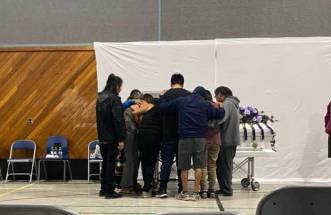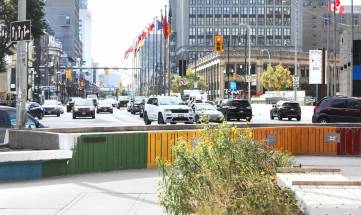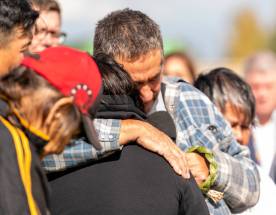First Nations policing is an essential service
Read this article for free:
or
Already have an account? Log in here »
To continue reading, please subscribe:
Monthly Digital Subscription
$0 for the first 4 weeks*
- Enjoy unlimited reading on winnipegfreepress.com
- Read the E-Edition, our digital replica newspaper
- Access News Break, our award-winning app
- Play interactive puzzles
*No charge for 4 weeks then price increases to the regular rate of $19.00 plus GST every four weeks. Offer available to new and qualified returning subscribers only. Cancel any time.
Monthly Digital Subscription
$4.75/week*
- Enjoy unlimited reading on winnipegfreepress.com
- Read the E-Edition, our digital replica newspaper
- Access News Break, our award-winning app
- Play interactive puzzles
*Billed as $19 plus GST every four weeks. Cancel any time.
To continue reading, please subscribe:
Add Free Press access to your Brandon Sun subscription for only an additional
$1 for the first 4 weeks*
*Your next subscription payment will increase by $1.00 and you will be charged $16.99 plus GST for four weeks. After four weeks, your payment will increase to $23.99 plus GST every four weeks.
Read unlimited articles for free today:
or
Already have an account? Log in here »
Hey there, time traveller!
This article was published 04/10/2022 (1160 days ago), so information in it may no longer be current.
If a home in Winnipeg is invaded by someone with a weapon, it’s expected police will rush to the crime scene within minutes. If the same scenario happens on a Manitoba First Nation, police response can be measured in hours, maybe days.
A total of 45 of 63 Manitoba First Nations do not have dedicated, in-community policing services. It’s a critical shortcoming that could be rectified if federal Public Safety Minister Marco Mendicino fulfills his pledge to introduce legislation this fall that advocates hope will make First Nations policing an essential service.
The broad strokes of the intention to bolster police services on First Nations was first announced by Prime Minister Justin Trudeau in 2020, long before the fateful tragedies of Sept. 3, when a rampage by a man with a knife on James Smith Cree Nation in Saskatchewan ended with 10 people dead and 18 injured.
When the killing started, police were a 40-minute drive away. The attacker was long gone by the time RCMP arrived and it took three days for police to find Myles Sanderson.
The horrific events didn’t instigate the federal government’s determination to beef up on-reserve policing, but it certainly underlined its importance. First Nations leaders have long said that without adequate on-reserve policing, gangs and drug dealers can intimidate residents to the point where elders are scared to leave their homes.
Past efforts to establish on-reserve policing date back more than 30 years. The federal First Nations and Inuit Policing Program was created in 1991 to provide funding for reserve policing services, but the inadequacies of that program were detailed in a report released Sept. 21 by Mr. Mendicino.
ADRIAN WYLD / CANADIAN PRESS FILES Minister of Public Safety Marco Mendicino
It concluded, “Not enough funding is available in the overall program budget to adequately support each First Nations police service to do their work and to meet the expectations of the communities served.”
A key difference that could be a game-changer is making First Nation policing an essential service, which is the direction sought by groups consulted by Mr. Mendicino’s department. The classification of essential service would change the laws, and the obligations, of both provincial and federal governments and would ensure stable funding.
It’s an encouraging sign that of Ottawa’s budget allocation of more than $850 million over five years to support police in Indigenous communities, $43 million of that has been set aside to develop legislation that would recognize First Nations policing as an essential service.
Many details are still to be worked out. What will be the jurisdictional lines between First Nations police forces and the nearest RCMP detachments? Which First Nations communities will be chosen as hubs for a regional model of policing that includes other First Nations in the vicinity?
In what ways will the federal and provincial governments be involved in shaping standards and accountability for the public funding?
The answers to these questions and others should be developed in consultation with First Nations, Métis and Inuit representatives. Commendably, such consultation has already been a big part of the preliminary stages of Ottawa’s new policing proposal.
Discussions have focused on encouraging models in which police recruits would be chosen from among residents of the First Nations, which would groom homegrown officers who have cultural knowledge, solid leadership qualities and accountability to the community.
Ensuring First Nations receive the long-term resources to maintain stable policing is essential for self-governance. It’s about acknowledging law and order did not arrive with the settlers; that First Nations had long employed protective and enforcement structures that served them well. It’s about insisting this critical step toward reconciliation needs to be designated an essential service.












